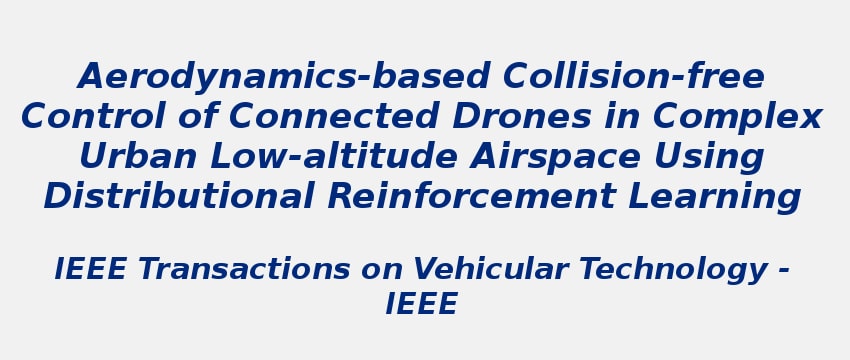Research Area: Machine Learning
Recent growth in the number of drones has made traffic management unworkable, particularly in urban areas. The safe operation and optimized navigation of drone swarms are now growing concerns. In this article, we use distributional reinforcement learning to prevent drone collisions via aerodynamic acceleration and deceleration. Although the instantaneous acceleration or deceleration of drones during an encounter influences drone kinematics, we note that drone kinematics itself can prevent collisions via instantaneous acceleration or deceleration. This articles central question, then, is how to take drone kinematics into account to improve air traffic intersection flow performance. First, the intercommunication between drone swarms is established via an Internet of drones to send and receive the current state of each drone in the swarm and detect potential collisions. In the presence of obstacles, we first use distributional reinforcement learning to find the inevitable change in kinematic height and guide descents and ascents through air traffic intersections. Here, the drones energy consumption during instantaneous acceleration or deceleration cannot be ignored. A properly designed speed control is crucial to the power management of the drone. Distributional reinforcement learning is used to control drone acceleration and deceleration to avoid collision risk while minimizing energy consumption according to the reference energy recorded by each drone. We flew drones to gather energy consumption data and, to validate our approach, we subsequently conducted simulations in which travel time and energy consumption were measured. We demonstrate that the proposed kinematics-based drone collision avoidance method exhibits excellent performance in terms of travel time and power management.
Keywords:
Author(s) Name: Bing-Hao Liao, Chao-Yang Lee, Li-Chun Wang
Journal name: IEEE Transactions on Vehicular Technology
Conferrence name:
Publisher name: IEEE
DOI: 10.1109/TVT.2024.3380846
Volume Information: Volume 73, Pages 9763-9775, (2024)
Paper Link: https://ieeexplore.ieee.org/document/10494776
